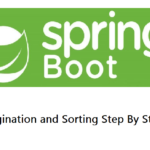Java Unleashed: Navigating the Next Frontier of Software Development
Introduction:
Java, the stalwart of programming languages, has traversed decades, leaving an indelible mark on the software development landscape. As we stand on the precipice of technological evolution, the future of Java beckons with promises of innovation, adaptability, and continued relevance. In this comprehensive exploration, we will delve deep into the historical strengths of Java, dissect its current state in 2023, and meticulously analyze the emerging trends that are poised to shape its destiny.
The Enduring Strengths of Java:
- Platform Independence and the “Write Once, Run Anywhere” Paradigm:
Java’s foundational principle of platform independence has been a bedrock of its success. We’ll examine how the ability to write code once and run it seamlessly across diverse platforms has contributed to Java’s unrivaled versatility. - Robust Ecosystem and Developer Community:
A thriving ecosystem, replete with libraries, frameworks, and tools, has been instrumental in Java’s sustained popularity. We’ll explore how the robust support system and the collaborative efforts of its vast community have propelled Java to the forefront of software development. - Backward Compatibility as a Pillar of Stability:
Java’s commitment to backward compatibility has ensured the longevity of applications and the protection of developers’ investments. We’ll delve into how this commitment has provided stability amid the ever-evolving tech landscape.
The Current Landscape: Java in 2023:
- Java 17 and the Shift to Time-Driven Releases:
A closer look at Java 17, the latest LTS version, will uncover the new features and enhancements introduced. We’ll discuss how the shift to a time-driven release model has affected Java’s development cadence. - Project Loom and the Evolution of Concurrency:
Examining the significance of Project Loom, we’ll explore how lightweight fibers aim to simplify concurrent programming, potentially revolutionizing the scalability of Java applications. - Containerization, Microservices, and Cloud-Native Development:
Java’s embrace of containerization and its role in microservices architectures will be detailed. We’ll discuss how technologies like Jakarta EE and MicroProfile are evolving to meet the demands of cloud-native development. - Java’s Role in Data Science and Machine Learning:
We’ll investigate Java’s expanding role in data science and machine learning, highlighting projects like Deeplearning4j and DL4J, and how the language is gaining traction in AI-related tasks.
Future Trends Shaping Java:
- Project Valhalla and the Introduction of Value Types:
A deep dive into Project Valhalla will reveal how the introduction of value types aims to enhance Java’s performance by allowing developers to work with lightweight, immutable data types. - Project Panama and Improving Native Code Integration:
The implications of Project Panama on Java’s ability to integrate with native code will be explored. We’ll discuss how these improvements can enhance performance in critical scenarios. - Enhancements in Data Handling for Big Data:
Anticipated improvements in data handling, storage, and processing will be scrutinized, especially concerning big data applications. We’ll look at how Java plans to address the challenges of data streaming and manipulation. - Developer Experience: Simplification and Expressiveness:
The future of Java will likely see a greater emphasis on improving the developer experience. We’ll analyze how Java plans to simplify complex processes, enhance tooling support, and provide more expressive syntax.
Conclusion:
As Java evolves, it remains a beacon of stability and innovation in the ever-changing world of software development. The future promises a Java that continues to adapt, embracing new technologies, and enhancing the developer experience while staying true to its core principles. Developers can look forward to navigating the next frontier of software development with a Java that is both time-tested and future-ready. “Java Unleashed” is not just a title; it’s a testament to the language’s journey and its boundless potential in the years to come.



